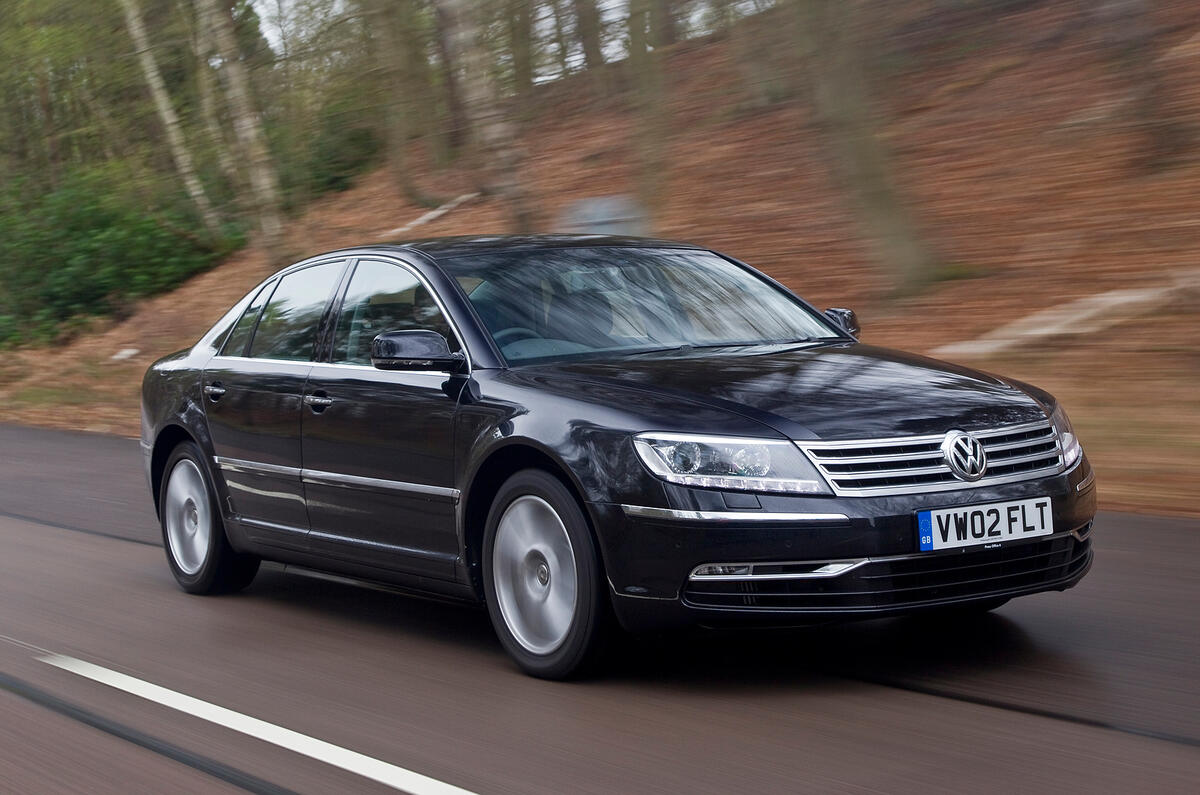The Volkswagen Phaeton
is the first and the last full sized, S-class competitor to roll out of the
Volkswagen group, sure you have the Arteon but we are talking about S-class
competitor here. When the Phaeton was introduced it shared the same
underpinnings of the Bentley continental, or rather the chassis of the Bentley
was the exact same chassis as the phaeton.

What was the motive or
idea behind making this car?
Don’t worry I know
clearly that the Phaeton is not a stretched Passat with a stretched price tag,
but let’s making things clear before geeking out about the huge amount
engineering that went into this car. Ferdinand Piech wanted a car that would
redefine the luxury segment and as the days of him being the chief engineer
were coming to an end he wanted to produce one last car before he resigned,
hence the Phaeton was born. Piech wanted a car that would do 187 mph on the
autobahn and still maintain a steady temperature, the car was built like a tank
with all the luxury and technology features from a class above. The Phaeton was
limited to 150mph but when the restrictors were removed it could do a
staggering 201mph, it should also be noted that even at such high speeds the
engine was barely audible. When discussing about the phaeton one must note that
a project like the Phaeton would have been hard to convince other officials to
pass but the chief engineer being Piech a man of great value allowed for it be
passed, for he was the man who saved Volkswagen from near bankruptcy, in 1993. Under
his reign he introduced the dual clutch transmission. Now having some idea as
to how honored the father of the Phaeton is let’s get back to the car.

Technical
specifications of the Phaeton.
Petrol engines
|
Model
|
Year
|
Engine type
|
power
|
0-100 Kmph (S)
|
Top speed
|
|
3.2 VR6
|
2002-2008
|
3,189 cc VR6
15 degree V engine configuration
|
241 bhp and 315NM of torque
|
9.4 sec
|
230 Kmph or (148 Mph)
|
|
3.6 VR6
|
2008
|
3,597 CC VR6
|
280 bhp 370 Nm of torque
|
8.6 sec
|
250 Kmph or (155 Mph)
|
|
4.2L V8
|
2002
|
4, 172 cc
|
335 bhp 430 Nm of torque
|
6.9 sec
|
250Kmph (155 Mph)
|
|
6.0L W12 (420ps)
|
2002-2004
|
5,988cc
|
414 Bhp 550 Nm of toque
|
6.1 sec
|
250Kmph (155 Mph)
|
|
6.0L W12 (450Ps) W12
|
2004-2011
|
5,988 cc
|
444 Bhp 560 Nm of torque
|
5.9 sec
|
250Kmph (155 Mph)
|
Diesel engines
|
3.0 L V6 TDI
225 PS
|
2004-2006
|
2,967 cc
|
222 bhp 450nm of torque
|
8.8 sec
|
234 Kmph (142 Mph)
|
|
3.0 L V6 TDI
233ps
|
2007- 2008
|
2,967 cc
|
230 bhp 450 nm of torque
|
8.4 sec
|
234 Kmph (142 Mph)
|
|
3.0 L V6 TDI
240ps
|
2008
|
2,967 cc
|
237 bhp 500nm of torque
|
8.3 sec
|
234 Kmph (142 Mph)
|
|
5.0L V10 TDI
|
2003-2007
|
4,921 cc
|
309 bhp and 750 Nm of torque
|
6.9 sec
|
250Kmph (155 Mph)
|
Responsible for road
holding, handling behaviour and ride comfort, the Phaeton Stock tire sizes are
255 45 on 28 inch rims at the front, and
255 45 on 28 inch rims at the rear. For stopping power, the Phaeton 6.0 W12
braking system includes Vented Discs at the front and Vented Discs at the rear.
The Phaeton also had pneumatic suspension.

What caused the car to
not meet the mark?
Well Volkswagen is a
company associated with manufacturing sensible, relatively economical and
practical car, the idea of a luxury car from such a company does not fit right
in the pallet of many consumers, especially a VW that looks like a stretched Passat
to the naked eye of many, to add to that no one could reason paying 65,000
pounds for a VW. Now Volkswagen wanted to sell a car to those who wanted all
the luxury of a Bentley but couldn’t afford one, but what they realized is that
in reality there is no such buyers in the market. The Phaeton was built in
Dresden in an environmentally friendly glass factory the goal was to sell
50,000 units a year but that was never met. The Phaeton was first introduced as
the Phaeton Long in 2002 and was sold till 2015 at which point was not
reasonable to manufacture or launch any face lifted Phaetons as it would not
meet Euro 6 standards, hence VW decided to stop production of the Phaeton completely.
My final thoughts.
The car was cursed by
the badge not that VW is a bad name or company, but a luxury car from VW
seriously? Till date people think it is a stretched Passat, and the sheer engineering
effort is sadly lost, but for us car enthusiast who know what the Phaeton is
will always be delighted to see one and one day to probably turn it into an
ultimate sleeper (Sleeper is the term used for a car that looks unmodified from
the outside but has a lot of power and completely modified engine). Hence the Phaeton
is an amazing car in my eye.
Liked the detailed coverage. VW should have done something different with styling to avoid the car being identified as Passat.
ReplyDelete